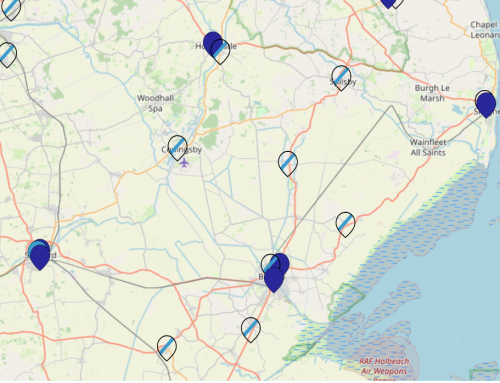The government has launched a consultation into minor changes to the School Admissions Code. The revised code seeks to improve the school admissions process where children are admitted to school in-year, but does not seek views on wider changes to the admissions system, despite the code last being updated back in 2014.
Comprehensive Future has responded to the consultation, with former Schools Adjudicator and Director of Education Alan Parker, casting his expert eye over the plans and penning a response. As our reply points out, ‘Over three quarters of England’s secondary schools are their own admissions authorities. The pressure of external performance measures has inevitably led to some schools finding more, and more ingenious, ways of using their admissions freedoms to change their intakes.’ We feel that the limited changes proposed by the DfE would be far better addressed as part of a full scale, thorough, reform of school admissions. You can read more about our ideas for reform HERE.
Here is our consultation response in full.
Background
Comprehensive Future launched in 2003. We are an all-party organisation working to end test admissions and ensure fair access to local comprehensive schools. Our vision is a system where every school welcomes local children of all abilities and offers an excellent quality of education. This requires a fair and inclusive admissions system and an end to the 11-plus.
We believe these aims are consistent with the intentions outlined in the introduction to the School Admissions Code. Regrettably, its detailed provisions fall short of realising its intentions. In 2018 we published a document arguing for reforms which would close that gap. That document Decision Time : A Plan for Fair Admissions offers a detailed plan to make access to schools fairer.
Over three quarters of England’s secondary schools are their own admissions authorities. The pressure of external performance measures has inevitably led to some schools finding more, and more ingenious, ways of using their admissions freedoms to change their intakes. Selection by faith, aptitude, catchment area, feeder school and complicated banding systems which seek to group children into different ability bands, can lead to some schools engineering themselves more socially selective, aspirant and high achieving intakes than other neighbouring institutions. Comprehensive Future proposes a new local body, an ‘Area Admission Authority’ to ensure a more equitable and efficient system for overseeing school admissions.
The key points of the Comprehensive Future plan are:
- No school should fix its own admissions criteria.
- No school should manage its own admissions.
- A new body should be set up to consult and reach consensus across a given community about what fair, objective, transparent admissions look like locally. That body should subsequently manage admissions for all schools.
- There would be a clear role for the Office of the School Adjudicator in policing the system on behalf of parents and the community.
We believe that this plan would mean that parent choice and fairness would trump institutional advantage. The outcome of the local set of agreed admission arrangements should, as far as possible, ensure more balanced intakes between schools and that no individual school’s arrangements should impact disproportionately on another local school.
You can find our report ‘Decision Time : A Plan For Fair School Admissions’ here. Read the full policy proposal HERE, and an alternative version of the Admissions Code, drafted as if ‘the interests of Parents and children were paramount’ HERE.
Introduction
We note that the present consultation is limited to wording changes in the Code that will not require primary legislation; and we are aware that implementing our simple, but radical, suggestions would require that level of change. However, we believe that they would, in fact, offer better and more effective solutions to most of the problems the present proposals are seeking to fix.
We also note that DfE has signalled its intention to make other changes that would require primary legislation. We therefore respectfully submit that, irrespective of the outcome of the present consultation, the department should initiate a wider review of other reforms that could be undertaken at the same time. Our comments on specific items in the consultation are set out below.
Responses to consultation Questions
- New Wording on In-year Admissions (Questions 1.1 to 1.7)
The consultation document says the aim is to set out how the process for in-year admissions “should be managed” to “ensure consistency of approach and timelier decision making. These aims are unexceptionable, and merely having a separate section in the Code is a step forward. However, the root cause of the problem is the existence of multiple different admissions authorities, many of which are motivated to operate in the interest of the institution rather than parents and pupils. Replacing them with a single local independent admissions authority committed to supporting parents and children would solve this problem at a stroke; and allow the Code itself to be much simplified.
In present circumstances some of the proposed changes are likely to be helpful; in particular, achieving greater coordination would be beneficial. However, there is some cause for concern that they may not all make as much difference as is hoped, and there may be unintended consequences. For example:
- The revised Code provides a more accurate account of the baseline legal position regarding casual admissions. However this is more complex and less certain than most people currently think. Greater understanding could lead to some OAA schools finding plausible reasons to be even more resistant to undesirable in-year admissions than they are already.
- The new version of the Code is longer on defining what admissions authorities are expected to do, than providing viable sanctions if they don’t. So, on the assumption that most cooperative schools do the right thing already, and those that aren’t will continue to drag their feet and find excuses not to; it is unclear how much will actually change as a result.
- Proposed new paragraph 2.25, requiring LAs to maintain a list of available places at all times, is possibly easier said than done. Leaving aside the likely reluctance of some schools to co-operate; the definition of “available places” is not straightforward. It is not simply a function of the PAN set at the time the particular year group joined the school – a fact that has become more obvious via the new wording on twice excluded pupils and those with challenging behaviour (Page 32. Para 3.9 – 3.12 see below). It is also the case that it could lead to an unhelpful increase in demand for in-year transfers that are not necessarily in the interests of children for whom stability is more important that a speculative move to a school parents consider to be slightly better.
- New Wording on FAP & “Challenging” Admissions (Questions 2.1 to 2.7)
As noted above with regard to in-year admissions, the need to have a local FAP and a formal definition of “challenging” pupils arises only from the existence of multiple school-based admissions authorities. The creation of a single, local body to manage these problems would allow a much simpler approach. It would still be necessary to have a transparent process including consultation with the management of schools being asked to take such pupils in-year. But this could be achieved by the Code articulating some simple key principles to be followed by each area body.
Once again, within the current framework, the words in the consultation document all seem very reasonable and appropriate. However, the key question is whether the actual changes proposed will have the desired effects. For example.
- FAPs have been develop with a degree of latitude for local agreement. Attempting to pin them down with more detailed requirements may disrupt arrangements that are working well in some areas without achieving much improvement in others.
- New paragraph 3.9 appears to be providing more encouragement for schools to refer pupils to the FAP process than the previous version?
- Adding children in need and those in ‘refuge’ situations is helpful.
- Given that the list has been expanded at both ends with important specifics at the beginning and some broad ‘catch-all’ categories at the end; there is probably no individual who wouldn’t fit anyway?
- Paragraph 3.18 (no duty to comply with parental preference) is helpful.
3: Children adopted from state care outside of England (Questions 3.1 & 3.2)
These proposals seem sensible and right – but the potential practical difficulties identified in the consultation document would need to be resolved.
4: The admission of service children and children of crown servants (Questions 4.1 & 4.2)
These proposals seem reasonable.
5: Minor policy and technical drafting changes (Questions 4.1 to 2.7)
Generally it is a good idea to update the Code improving its clarity and technical accuracy and many of these changes do just that. However, there are one or two issues arising that may be less ‘minor’ than they seem; or may have unlooked-for consequences.
- On Page. 26 of the revised Code. The former Par. 2.19 “Children from overseas” has been deleted. Because the existing paragraph specifies a requirement to comply with EU law the desire to take account of Brexit is understandable. However, the paragraph also includes a reference to “Home office rules” in respect of ‘other nationals.’ This leaves a gap which needs to be filled, namely: what should actually happen to any applicants arriving from abroad post Brexit?
- On Page 29 paragraph 2.32 is unchanged. However, it needs another look. It currently states that when a school is closing the LA must “collaborate with all schools in the area” to accommodate displaced pupils. This is both otiose and the wrong way round. Because of the LA’s overarching duty to “secure sufficient schools” for its area, it has no choice but to look amongst all local schools for the requisite number of places – so this is hardly worth stating. On the other hand, it would be quite helpful if the Code were to oblige all the schools in an area to cooperate with the LA to enable it to fulfil its duty.
- Paragraph 1.32 c) on page 15 is also unchanged – apart from a new footnote excluding banding tests – but should be changed even further. This provides that where children take other kinds of selection tests parents should be given the results before the deadline for secondary applications (31st October). However, in response to Covid 19, and the loss of preparation time for 11+ exams, DfE have, this year, agreed that this rule can be waived to facilitate the exams being held later to allow more catch-up time in the autumn term. They have therefore conceded that this rule is not very important.
- On this latter point, it is possible to go further and argue that it is not only unnecessary but can be damaging. The argument, in brief, is that co-ordinated admissions systems are designed to deliver the best available option and that parents are best advised to list schools in their genuine order of preference. This provision undermines that advice by implying that this is information that parent’s will always need before they make their ‘choices’. Although in some areas and some cases a high score will mean a grammar school offer is likely (or a very low one, the opposite) in many others it won’t be at all clear. The correct solution to this issue is to delete paragraph 1.32 c) but introduce a new requirement for coordinated schemes in areas with selective schools to include sufficient preferences (i.e. 6 rather than 3) to allow parents to name a reasonable number of both selective and non-selective schools.
Comprehensive Future
20th September 2020





